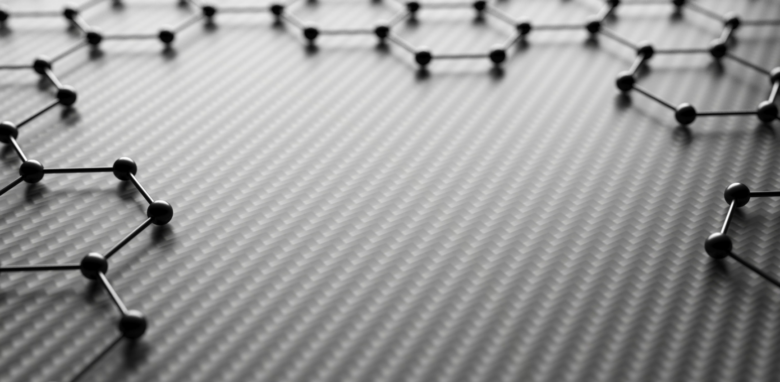Scientists have developed the first functioning graphene semiconductor, which will revolutionize electronics and computing
Scientists created the first functional semiconductor ever made from graphene, a material known for its resistance, flexibility, lightness, and extreme resistance; this was a major breakthrough in semiconductor technology.
With this development, timing couldn’t be better. Unfortunately, silicon is becoming more scarce and is used in almost all modern devices.
Graphene semiconductors are being developed at a rapid pace due to their superior efficiency and speed compared to silicon.
This discovery was published in the January 3rd edition of the scientific journal Nature and introduces a graphene semiconductor that is functional and ideal for use in nanoelectronic devices.
Improved, faster, and more energy-efficient electronics
According to experts, innovation has a lot of potential benefits for the electronics business.
Graphene electronics are more efficient since they need less electricity to turn on and off. Furthermore, they allow electrons to travel through without producing too much heat, which gets rid of the need for energy-intensive cooling fans,” Haigh explains.
“This would mean that phones could go weeks without recharging and reduce energy consumption in every part of our lives, reducing the costs and pollution caused by fossil fuels,” he said.
The creation of quantum computers might be accelerated by the new graphene superconductors, which could also increase machine speed and energy efficiency.
Quantum computers, which are still in their early stages, might one day tackle tasks that would take ordinary supercomputers millennia to accomplish—all in a matter of seconds.
This discovery, say the authors, signals the beginning of a golden period for electrical device and computer architecture.
“We don’t know where this will end, but we know we are opening the door to a major paradigm shift in electronics,” said lead author Walter de Heer of the Georgia Institute of Technology in the US in a press release. In the beginning, there is graphene. It is reasonable to expect graphene to replace other materials as the industry standard over the next fifty years, but who can predict the future?
Silicon semiconductors’ limits are quickly approaching
Through the transmission of electricity through silicon switches, the chips found in computers, laptops, and mobile phones represent bits, which are ones and zeros. In order to function, credit card transactions, vehicle starters, and door openers for public transit all depend on semiconductors made of silicon.
Semiconductors are essential for the operation of computers. One possible usage is to construct little switches that can be turned on and off to control the flow of electricity. According to Sarah Haigh, a materials scientist from the UK’s National Graphene Institute, computers can do calculations because energy can be transferred via electrical circuits.
However, because to its limitations, researchers are actively seeking alternatives to silicon semiconductors.
“Silicon electronic components require a large amount of power and energy, including the energy needed to cool the electronic components when the energy is emitted as heat,” DW reported that Haigh stated.
Graphene — a “wonder material”
A carbon sheet with a thickness of just one atom is known as graphene. A mosaic of hexagons forms the layout of these carbons, which is reminiscent of a honeycomb. Despite its ultrathinness, graphene has extraordinary electrical and structural properties.
It has a strength that is on par with or higher than steel’s, despite steel’s approximately 200-fold lower density. You can hold a football on top of only one atomic layer of graphene.
Electronics, batteries, and even printing on materials like fabric, glass, and plastic are just a few of the many uses for graphene’s extraordinary pliability.
Scientists are primarily intrigued by its potential as a faster and more energy-efficient semiconductor
“The ability to maintain graphene’s exceptional speed and electron conduction efficiency without requiring large amounts of energy offers enormous potential for it to be used to create electronics beyond silicon, with faster computers that use less energy to run,” Haigh pointed out.
Galois field-effect transistor
There are a number of downsides to graphene that have prevented it from being employed in electronics. One of the significant issues is called the “bandgap problem”
“For more than a decade, scientists in the field have been trying to apply graphene’s exceptional conductivity to electronic circuits,” he said.
An important electrical property of semiconductors is their band gap, which determines how they may switch between on and off states. Graphene did not have a band gap until quite recently.
The research conducted by De Heer’s group has opened the door for graphene to be included into tailored silicon carbide devices. Improving the materials and achieving the necessary structure by modifying graphene’s chemical properties took ten years of research.
Graphene is currently on par with silicon as far as semiconductor quality is concerned
One benefit of graphene over silicon is that it enables the use of electron characteristics that silicon does not, resulting in smaller, faster, and less heat-dissipated objects. According to de Heer, this is a significant change from conventional electronics work.
According to experts, innovation has a lot of potential benefits for the electronics business.



